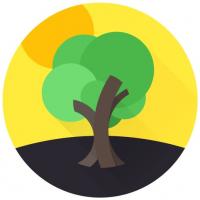Citizen Scientist Project: Saving Trees with Apps

Can trees help slow global warming? After all, the net cooling effect of a young, healthy tree is equivalent to ten room-size air conditioners operating twenty hours a day, according to the USDA Forest Service. But what if the day comes when we really can’t see the forest for the lack of trees?
Our forests struggle with invasive species and pests, yet some trees still survive. Why? To find out, scientists need resilient trees to study, and that’s where technology and citizen scientists can contribute. TreeSnap is a free mobile app that enables everyday people to serve as “eyes in the field” and tag trees that scientists can study.
Here’s how it works.
When you’re walking in the woods, snap a photo of one of the tree species that have been either negatively affected by an invasive insect or disease or that are economically important, such as an American chestnut, ash, hemlock, white oak, and American elm.
Then, answer a few questions. If you come across a white oak (Quercus alba), do you see any acorns on the tree? Lots? None? Tap if you see any potential health problems, such as dieback in the canopy, defoliation, bark damage, and/or other signs.
The GPS location of the tree is not publicly displayed, and only TreeSnap-related research programs will have access to the data. Additionally, the map will only display the approximate location of each tree, or you can choose not to add your data to the map entirely. And since not everyone has cell coverage in the woods, the data is stored to be downloaded later.
“The app gives those who are already in the forest, hiking or surveying their woods a way to collect data that researchers can access,” said Ellen Crocker, a postdoctoral scholar of eastern forest health issues in the UK Department of Forestry and Natural Resources in the College of Agriculture, Food and Environment, in the announcement.
Available in the Apple App Store and Google Play Store, TreeSnap is developed as collaboration between scientists at the University of Kentucky and the University of Tennessee. The project is funded in part by the NSF Plant Genome Research Program.
What if you’re not sure if you’re looking at a chestnut tree or an ash? The TreeSnap’s Info tab for each tree is pretty basic. Leafsnap is another free mobile app and is an electronic field guide developed by researchers from Columbia University, the University of Maryland, and the Smithsonian Institution. Leafsnap uses visual recognition software to help identify tree species from images of their leaves. Many university Extension services also have regional guides. The Arbor Day Foundation’s online resource What Tree Is That? is another good resource.
Saving trees with apps may be the easiest—and most beneficial—science project ever.

